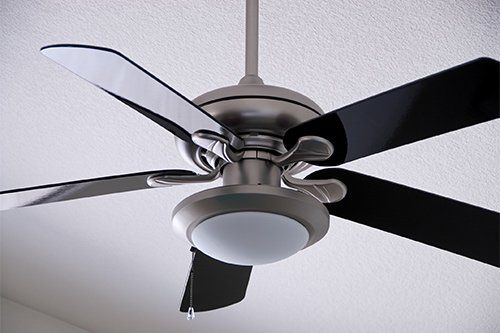Installing Ceiling Fans? Here Is What You Should Know
Admin • November 5, 2018
In spite of the popularity and ubiquity of modern heating and cooling technologies, ceiling fans are still an attractive and even cost-effective way to keep the home comfortable and fresh all year round. Ceiling fans also serve an aesthetic function and can improve a room's visual interest.
In the warmer months, ceiling fans create a wind-chill effect that keeps most people comfortably cool without needing to turn the air conditioning on. In the winter, reversing the blades pushes warm air down from the ceiling toward the floor, which keeps the house warm and minimizes furnace use.
Simple as they may seem, choosing the right ceiling fan can be overwhelming given the sheer variety of styles available. Here is a simple guide to help you make an informed decision when selecting a ceiling fan for your home.
Style
Ceiling fans come in many different styles and materials. Common styles include modern, industrial, rustic, charming country, and contemporary chic, just to mention a few.
Popular materials for the fan's blades and base include plastic, wood, bronze, brass, and fiberboard. The material tends to influence the price of the fan, with plastic fans costing considerably less than fans made out of real wood or polished metal.
Location
Ideally, you should install fans in locations such as the living room, breakfast nook, patio, or bedroom, as these are the areas where people typically gather. Spots that tend to receive a lot of heat or sunlight can also benefit from ceiling fans.
For purposes of warming the house, consider installing fans in strategic places such as near the fireplace or at the top of the stairwell. This way, the fan can distribute warm air to the rest of the house.
Ceiling
Another important consideration is the type and height of the ceiling. To ensure safety and comfort, the fan should hang at least 7 feet above the floor and should have adequate clearing from adjacent walls.
Low ceilings usually require low profile, flush mount fans that attach close to the ceiling. However, you can still enjoy the charm and efficiency of ceiling fans if you have high or sloped ceilings.
For high ceilings, your electrical contractor will use an extension rod to bring the fan to the proper height. Handy devices such as angle mount adaptors can allow you to install a fan on a sloped ceiling.
Size
The right size fan will depend on the size of the room. Ceiling fans sizes range from 29 inches to 60 inches in diameter. The size of the fan is important, as this affects the airflow, which is the amount of air the fan delivers. A fan that is too small or too large can lead to uncomfortable hot and cold spots in a room.
Controls
The three ways to control a fan are via a wall control, a remote control, or a pull chain. A pull chain is part of the fan's assembly and gives off a retro vibe.
If you are looking for convenience, opt for a remote-controlled ceiling fan that lets you operate the fan from anywhere in the room. A wall switch control works more or less like a light switch and can be a great choice for ceiling fans with light fixtures attached.
Quality
The quality of ceiling fans varies widely. Opt for fans with adequately long and well-balanced blades made from high-quality materials and finishes. Invest in a ceiling fan with a strong, maintenance-free variable speed motor and sealed precision bearings that have a low noise rating.
Even with the best quality fan, proper location and installation makes all the difference. For a professional job, hire a certified electrician to mount your fans. If you want ceiling fan and chandelier installation and repair in Los Angeles, call our pros at Express Electrical Service
today.
Does your home fuse box need an upgrade? Read this blog to learn about six signs that indicate it’s time for an upgrade to protect your electrical system.
In this detailed article, we'll take a detailed look at some signs that your kitchen needs rewiring. Continue reading to find out more.
What types of electrical upgrades do you need to make before you list your home for sale? Take a look at the top electrical upgrades to consider.
There are several ways to protect your water mains and keep them in good condition. Discover three simple things you can start doing today.
Improving your office space is a great way to improve the workspace. Learn five critical services electricians offer during office remodeling projects.
A slab leak can cause more than just water damage to your home, especially in the summer. Read about the dangers of a slab leak by reviewing this blog.
As a property owner, you have certain responsibilities for the plumbing of your rental property. Learn professional tips by reading this blog.
Many homeowners have been bombarded with conflicting advice and outdated myths about plumbing. But no longer! Read our blog to learn about a few myths.
A major plumbing issue that constitutes an emergency is a water main break. Read this blog to learn about a main break’s causes, effects, and solutions.
You may be competent at fixing many home plumbing problems, but some issues require a professional hand. Here are 7 signs that indicate such a need.

